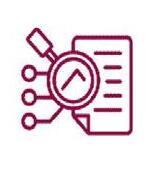
Topic/Big Question

Pupils in Year 7 carry on their chronological history journey from primary school in a chronoloigcally sequenced curriculum to further their knowledge and understanding of Britain 's past and that of the wider world. This journey starts in Year 7 by introducing pupils to how academic history is constructed through historical enquiry and the rigorus use of evidence. Pupils follow themes that have helped shaped Britain and the wider world and the lives of people and institutions that have mattered in the past and present. They build on their understanding of important disciplinary concepts and sense of chronology throughtout KS3 that also provides a foundation for the future study of history beyond.
Trinity 1 JuneJuly SeptOctNovDecJanFebMarAprMay
How did Harold die at the Battle of Hastings?
Theme(s) (substantive conc Historical enquiry
Key Knowledge Differences between Harold Gowinson & William of Normnady, AngloSaxons & Normans at the Battle of Hastings, key features of the Bayeux Tapestry, how historians use sources and evidence to learn about the past, how the provenance of source can impact the usefulness of the source content

Key Skills

Sources & historical evidence Assessment

Careers


National Curriculum
End of unit extended writing assessment
Why was England Christian by 1066?Were medieval peasants really powerless?How far did religion change under the Tudors?
Invasion, empire, the Christian Church, pagans, migration, unified England Power, peasantry, nobility, rebellion, Reformation, power, parliament, democracy, the Church of England
Role of Roman invasion & migration in bringing Christianity to the British Isles and impact on shaping religious beliefs. The impact of migration from 440 on Christianity, the competition between pagan beliefs, Celtic Christianity & Catholic Christinity, including the importance of St Patrick and his missionaries, St Augustine and the Synod of Whitby. The impact of Viking invasion & migration from 793 and creation of England 927 by the Anglo-Saxons. The consolidation of Catholic Christianity in England up to and including the Norman Conquest in 1066.
The key features of the Fedual System and the role of Villeins. Key features of Medieval peasant life and the role of agriculture & land in social status. Winners & losers in society in 1347. Impact of the Black Death from 1349 on society. Causes & consequences of the Peasant's Revolt 1381. Experiences of women in the Middle Ages, reasons for the end of the Feudal System
Why the Tudors came to rule England & Wales from 1485. What the young Henry VIII was like. Key beliefs and practices of the Roman Catholic Church in 1509. Reasons for Martin Luther's opposition to the Catholic Church. Reasons why Henry wanted to end his marriage to Catherine of Aragon & why this resulted in the Break from Rome. How religion changed in England under Henry VIII. How religion changed in Egnland under Edward VI, Edward VI's attempt to protect his legacy through Lady Jane Grey, reasons for Mary I's legacy as Bloody Mary, including importance of Foxe's Book of Martyrs, reasons for and key features of Elizabeth I's 'middle way' reliogus settlement.
Cause & consequenceSimilarity & differenceChange & continuity
End of unit checkpoint. Short answer knowledge based questions.
Development of Church, state and society in Medieval England
The study of an aspect of theme in British history that consolidates and extends pupils’ chronological knowledge from before 1066. Development of Church, state and society in Medieval England
End of unit checkpoint extended writing task.
End of unit checkpoint. Short answer knowledge based questions.
